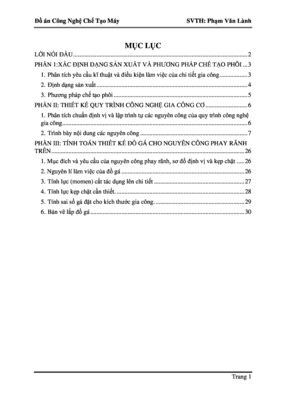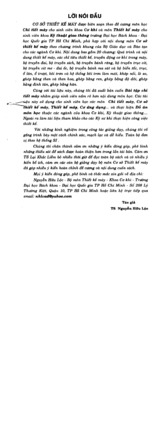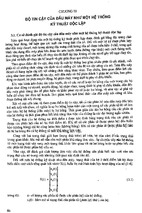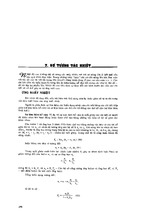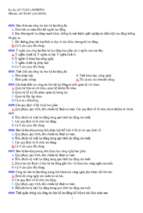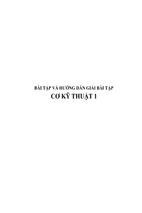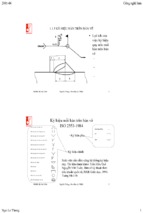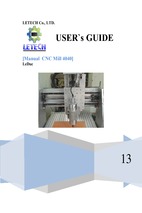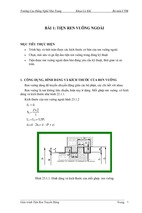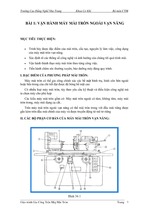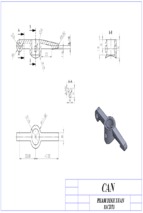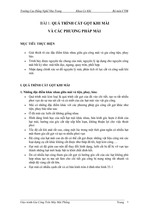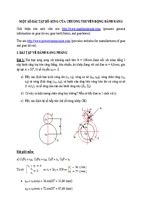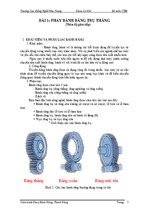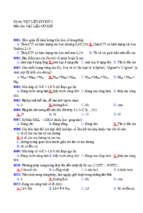SUSTAINABILITY-ORIENTED
STARTUP DEVELOPMENT
03.11.2016
Tim Stock
Technische Universität Berlin
Funded by
the European Union
AGENDA
Motivation from a Sustainability Point of View
Values in Engineering
Startup Development
2
AGENDA
Motivation from a Sustainability Point of View
Values in Engineering
Startup Development
3
MOTIVATION FROM A SUSTAINABILITY POINT OF VIEW
SUSTAINABLE DEVELOPMENT
„Sustainable development is development that meets the needs of the present without
compromising the ability of future generations to meet their own needs“. (World
Commission on Environment and Development 1987, S.41)
Environmental
Domain
Environments sustain societies that create
economies which are based on
technologies
Social
Domain
Economic
Domain
Technological
Domain
[WCED-1987; WWF-2014]
4
MOTIVATION FROM A SUSTAINABILITY POINT OF VIEW
SELECTION OF RELEVANT GLOBAL TRENDS 2015 & 2016
Socio-economic inequality
Economic
Migration and displacement
Social
Urbanization
Climate change
Environmental degradation
Rise of cyber dependency
Environmental
Technological
[WEF-2016]
5
World Bank
MOTIVATION FROM A SUSTAINABILITY POINT OF VIEW
SOCIO-ECONOMIC INEQUALITY
The average income of the richest 10% among the countries of
the OECD has grown to about nine times to that of the poorest
10% - which corresponds to an all-time peak.
The inequality is not only present between social groups but also
between genders. In average, women earn 16% less than men.
OECD - Organisation for Economic Co-operation and Development
[OECD-2014; WEF-2015]
6
MOTIVATION FROM A SUSTAINABILITY POINT OF VIEW
SOCIO-ECONOMIC INEQUALITY
Wealth of bottom 50% ($bn)
Wealth of richest 62 people (from Forbes, $bn)
3000
2500
2000
1500
1000
500
0
2000 2001 2002 2003 2004 2005 2006 2007 2008 2009 2010 2011 2012 2013 2014 2015 7
[OXFAM-2016]
MOTIVATION FROM A SUSTAINABILITY POINT OF VIEW
MIGRATION AND DISPLACEMENT
Number of people internally displaced by conflict and violence as of the end of 2015, millions
1,5
1,5
1,7
1,7
DRC
South Sudan
2,1
Yemen
2,5
Iraq
6,3
Syria
6,6
0
1
2
3
4
5
6
Global refugee flows have reached a level that is unprecedented in recent history.
IDCM
3,2
3,3
7
In 2015, 40,8 million people were internally displaced (IDPs) worldwide as a result
of conflict and violence, compared to 40 million at the time of World War II.
The total number of IDPs has doubled over the past 15 years and it is the highest
figure ever reported since IDMC began monitoring internal displacement in 1998
Around three quarters, or 30 million people, were located in just ten countries –
see figure above.
[WEF-2016, IDCM-2016]
8
MOTIVATION FROM A SUSTAINABILITY POINT OF VIEW
URBANIZATION
Contribution to the increase in urban population by country, 2014 to 2050, millions
2500
2000
Other countries
1500
50 %
1000
India
Democratic Republic of the Congo
Pakistan
USA
Indonesia
United Nations
500
Nigeria
China
0
The increasing urbanization and global urban
population growth is another main global
societal trend which especially takes place in
Africa and Asia.
[WEF-2015, UN-2014]
9
MOTIVATION FROM A SUSTAINABILITY POINT OF VIEW
SOCIO-ECONOMIC INEQUALITY
Average annual temperature, °C
0,8
0,6
0,4
0,2
-0,2
1950 1955 1960 1965 1970 1975 1980 1985 1990 1995 2000 2005 2010 2015
nasa
0
-0,4
The climate change also puts pressure on
societies by possibly being the reason for
uncontrolled population migrations, since it
has a direct impact on the ability to grow food
and the access to water.
[WEF-2015, NASA-2016]
10
MOTIVATION FROM A SUSTAINABILITY POINT OF VIEW
ENVIRONMENTAL DEGRADATION
Global Living Planet Index, Index Value 1970 = 1
1
0
1970
1980
1990
2010
2000
According to the WWF Living Planet Index, a decline of
52 per cent between 1970 and 2010 occurred: On
average, vertebrate species populations are about half
the size they were 40 years ago.
[GFN-2015; WWF-2014]
11
MOTIVATION FROM A SUSTAINABILITY POINT OF VIEW
ENVIRONMENTAL DEGRADATION
Humanity’s Ecological Footprint, Number of Planet Earths
2
1
World biocapacity
0
1970
1980
1990
2000
2010
The consumption of regenerative resources can be measured
through the Ecological Footprint, i.e. an estimate of the
biologically active area needed to support humanity's current
lifestyle.
The actual consumption of natural resources exceeds the
regenerative capacity of the planet by 50%. Non-renewables are
not considered.
[GFN-2015; WWF-2014]
12
MOTIVATION FROM A SUSTAINABILITY POINT OF VIEW
RISE OF CYBER DEPENDENCY
Ramsoftware Detections, Oct 2015 = 100%
1200
1000
800
Germany
World
600
400
200
0
Oct 15
Nov 15
Dez 15
Jan 16
Feb 16
The hyperconnectivety leads to a rising
“cyber dependency” and the risk of largescale cyber-attacks
[WEF-2015; HEISE-2016]
13
MOTIVATION FROM A SUSTAINABILITY POINT OF VIEW
THE MOST LIKELY GLOBAL RISKS 2016: A REGIONAL PERSPECTIVE
Central Asia including Russia
Unemployment or
underemployment
Data fraud
or theft
Cyber
attacks
Fiscal
crisis
Extreme
weather
events
Latin America
and the Caribbean
Failure of
national
governance
Economic
Societal
Technological
Water
crises
Failure of
national
governance
Risk Category
Geopolitical
Unemployment or
underemployment
Natural
catastrophes
Middle East
and North Africa
Profound social
instability
Environmental
Failure of national
governance
Large-scale
involuntary
migration
North America
Interstate
conflict
Energy
price
shock
Europe
Unemployment or
underemployment
East Asia an
the Pacific
Water
crises
South Asia
Sub-Saharan
Africa
Failure of critical
infrastructure
Unemployment or
underemployment
Extreme weather
events
[WEF-2016]
14
MOTIVATION FROM A SUSTAINABILITY POINT OF VIEW
UN SUSTAINABLE DEVELOPMENT GOALS
169 targets to be achieved by 2030
Adopted by 193 countries during the 2015 UN General Assembly (October)
[UN-2016]
15
MOTIVATION FROM A SUSTAINABILITY POINT OF VIEW
Startups can essentially contribute to a sustainable
industrial development by transforming technological
inventions into sustainable innovations.
By means of the market dynamics of cooperation and
competition in global value chains and knowledge
networks, these innovative products and services can
contribute to a global sustainable development.
16
MOTIVATION FROM A SUSTAINABILITY POINT OF VIEW
REFERENCES I
Short cut
[ACATECH-2013]
Source
Acatech: Umsetzungsempfehlungen für das Zukunftsprojekt Industrie 4.0 – Abschlussbericht des Arbeitskreises Industrie
4.0, 2013.
[ENQ-1998]
Enquete-Kommission des Bundestages: Abschlußbericht der Enquete-Kommission des 13. Deutschen Bundestages,
Drucksache 13/11200, Berlin, 1998.
[GAU-2015]
Gausemeier, J.; Czaja, A.; Dülme, C.: Innovationspotentiale auf dem Weg zu Industrie 4.0. In: Wissenschafts- und
Industrieforum Intelligente Technische Systeme 2015, Heinz Nixdorf Institut, 2015.
[GFN-2015]
Global Footprint Network: National Footprint Account results (2015 Edition), last access April 2015.
[HEISE-2016]
Heise Security: In Deutschland grassieren Erpressungs-Trojaner – so schützen Sie sich.
www.heise.de/security/meldung/In-Deutschland-grassieren-Erpressungs-Trojaner-so-schuetzen-Sie-sich3143764.html?view=zoom;zoom=1, 2016.
[HIR-2014]
Hirsch-Kreinsen, H.; Weyer J.. "Wandel von Produktionsarbeit –„Industrie 4.0 “." Soziologisches Arbeitspapier 38, 2014.
[IDCM-2016]
Internal Displacement Monitoring Centre: 2016 Global Report on Internal Displacement (GRID 2016), 2016.
[NASA-2016]
NASA: NOAA Analyses Reveal Record-Shattering Global Warm Temperatures in 2015.
www.giss.nasa.gov/research/news/20160120//, 2016
[OECD-2014]
OECD: OECD Factbook 2014: Economic, Environmental and Social Statistics, OECD Publishing, Paris, 2014.
[OXFAM-2016]
Hardoon, D.; Fuentes-Nieva, R.; Ayele, S.: An Economy For the 1%: How privilege and power in the economy drive
extreme inequality and how this can be stopped. Oxfam International, 2016.
17
MOTIVATION FROM A SUSTAINABILITY POINT OF VIEW
REFERENCES II
Short cut
Source
[SEL-2010]
Seliger, G.: Emerging Markets bei materiellen Grenzen des Wachstums – Chancen nachhaltiger Wertschöpfung. In:
Gausemeier; Wiendahl: Wertschöpfung und Beschäftigung in Deutschland, 2010.
[STO-2016]
Stock, T.; Seliger, G.: Opportunities of Sustainable Manufacturing in Industry 4.0. In: Proceeding of the 13th Global
Conference on Sustainable Manufacturing, Vietnam, 2016.
[UN-2014]
UN-2014 United Nations: World Urbanization Prospects The 2014 Revision Highlights, 2014.
[UN-2016]
United Nations: Sustainable Development Goals, http://www.un.org/sustainabledevelopment/sustainable-developmentgoals, 2016.
[WCED-1987]
World Commission on Environment and Development (WCED): Our Common Future. United Nations. 1987.
[WEF-2015]
World Economic Forum: Global Risks 2015, 10th Edition, 2015
[WEF-2016]
World Economic Forum: Global Risks 2016, 11th Edition, 2016
[WRG-2012]
2030 Water Resource Group: The Water Resource Group, Background, Impact and the Way Forward. Briefing report
prepared for the World Economic Forum Annual Meeting 2012 in Davos-Klosters, 2012.
[WWF-2014]
McLellan, R., Iyengar, L., Jeffries, B., & Oerlemans, N. (Eds.). (2014). Living Planet Report 2014: species and spaces,
people and places. World Wide Fund for Nature.
18
AGENDA
Motivation from a Sustainability Point of View
Values in Engineering
Startup Development
19
VALUES IN ENGINEERING
VALUE SYSTEM IN ENGINEERING
Development and selection of technological options under the influence of general frame
conditions and individual dispositions
[VDI-3780]
Value
System
Frame conditions
Objectives
conceptualize
Individual dispositions
Preferences
Restrictions
Imaginable
technical
options
Delimit;
make
precise
Feasible
technical
options
Evaluate
Decide
Realize
Technological
17
20
reality
- Xem thêm -


